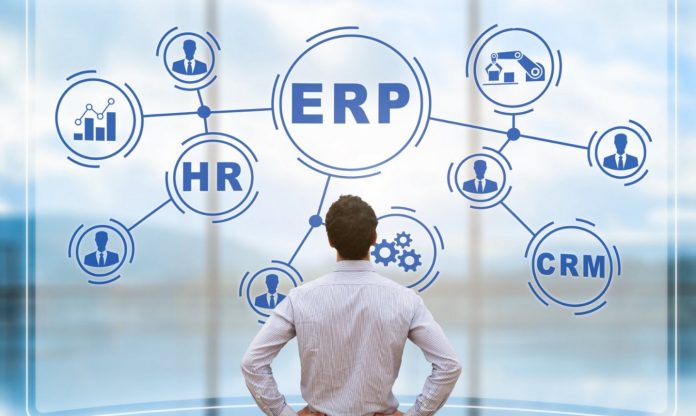Streamlined enterprise resource planning is key to enhanced operational efficiency and advanced service quality. To improve this business aspect, organizations across industries increasingly adopt ERP software. According to the Research and Markets’ 2023 report, the ERP market will grow to $294.34 billion by 2027 at a CAGR of 11.9%.
In recent years, ERPs have penetrated the automotive market as well. By implementing robust automotive ERP systems, dealerships, manufacturers, car-sharing services, and other automotive organizations can streamline operational efficiency and improve competitiveness.
To further enhance the advantages of their ERP solutions, organizations can integrate them with other corporate systems. This article covers six major ERP integrations that can benefit automotive businesses.
1. Customer relationship management (CRM)
Integration between ERP and CRM is the one to be considered by decision-makers foremost. By integrating both business functions, automotive organizations can gain several competitive advantages.
With this integration, any department across an organization can obtain customer data (including past purchases, orders, contacts, age, and other info) via an ERP interface. In practice, this can help customer service process tickets and resolve issues more quickly and accurately, resulting in enhanced customer satisfaction.
In addition, the integration between ERP and CRM allows organizations to increase sales. With its help, sales department members can check what products or services a client has purchased in the past to make more targeted and personalized offers or put effort into upselling and cross-selling.
After all, integration between ERP and CRM can be valuable from a marketing standpoint. With it, employees can identify the correlation between marketing activities (for instance, social media or email campaigns) and customer purchases to understand which tactics bring tangible results and should be maximized.
2. Human resource management (HRM)
Typically, HRM software helps organizations store and manage employee data, acquire new talents, as well as manage, train, and retain existing team members. Integration between HRM and ERP can connect critical business functions, resulting in multiple practical benefits.
In particular, ERP data can help HR professionals keep track of inventory, an organization’s current projects, and the resources required to complete them. With this information, an HR department can allocate the workforce more accurately, resulting in streamlined and cost-effective operations.
In addition, using data from an ERP, HR specialists can predict what skills and talents an organization will require in the near future. With this business advantage, HR managers can initiate recruitment and training of employees to help an organization prevent a skill gap in advance and ensure seamless operation.
3. Manufacturing execution system (MES)
MES is an indispensable tool for any organization involved in automotive manufacturing. MES allows automotive businesses to automate and optimize all critical aspects of manufacturing, including quality control, transportation, and production scheduling.
So why consider integrating MES with ERP? One reason is that the integration allows organizations to keep track of inventory levels, even in real-time, and take this information into account for production planning. This way, organizations can avoid delays in production and delivery and thus improve customer satisfaction.
In practice, MES integration can also help an organization implement the concept of just-in-time (JIT) delivery to tailor raw-material supply to production schedules. Thus, an organization can make its manufacturing process more cost-effective and free up space in corporate warehouses.
4. Electronic data interchange (EDI)
As partner networks and document flows become more complex, an automotive organization can require specific tools for electronic data interchange. EDI software helps reduce paperwork and manual data input by automating document receipt, signing, and sending to business partners and suppliers.
By integrating EDI and ERP, organizations can implement end-to-end data collection and processing automation across their digital ecosystems. As a result, it will reduce data errors and duplicates, helping avoid disruptions in supply chains and operations and enhancing customer satisfaction.
Such integration allows for generating and sending any documents (tickets, invoices, or purchase orders) without human intervention. In addition, these documents can be easily tracked via an ERP interface, enabling employees to check the status of any transaction at any time and get involved if necessary.
5. Enterprise asset management (EAM)
A growing automotive business has to manage increasing numbers of physical assets, such as vehicles, equipment, machinery, and facilities. Without an EAM solution, asset management at the scale of an enterprise can become especially challenging, resulting in reduced operational efficiency and shortened asset lifecycle.
Although EAM and ERP focus on different aspects of the automotive business, integration between the systems can be extremely valuable. In particular, using ERP automation capabilities, organizations can automate EAM processes to simplify and streamline asset management while prolonging the assets’ lifespan.
Given that ERP helps monitor and manage finances, an integration with EAM can also help employees keep track of the financial health of corporate assets. Thus, integration can help specialists make assets more profitable and improve KPIs as return on assets (ROA).
6. Business intelligence (BI)
A typical automotive organization generates and processes vast amounts of data that can be used for decision-making at both tactical and strategic levels. Increasingly more organizations utilize BI solutions to gain meaningful insights based on this data. To get even more value out of corporate data, organizations can consider integrating their business intelligence with ERP.
First, with such integration, employees can quickly analyze data from ERP to make more accurate business forecasts. For example, employees can analyze sales and inventory data to predict customer demand or identify bottlenecks.
Secondly, such integration allows employees to analyze the performance of all processes connected to ERP, including logistics, finance, and HR. Thus, organizations can utilize BI and ERP integration to optimize critical aspects of enterprise resource planning.
Final thoughts
As the automotive business grows, managing all aspects of enterprise resource planning can become too complicated and demanding. Fortunately, by adopting an automotive ERP, organizations can meet this challenge while increasing operational efficiency, service quality, and competitiveness.
However, an organization can gain even more value from its ERP system by connecting it to other business solutions. As an option, ERP can be integrated with such tools as CRM, HRM, and MES or corporate EDI, EAM, and BI software.


































